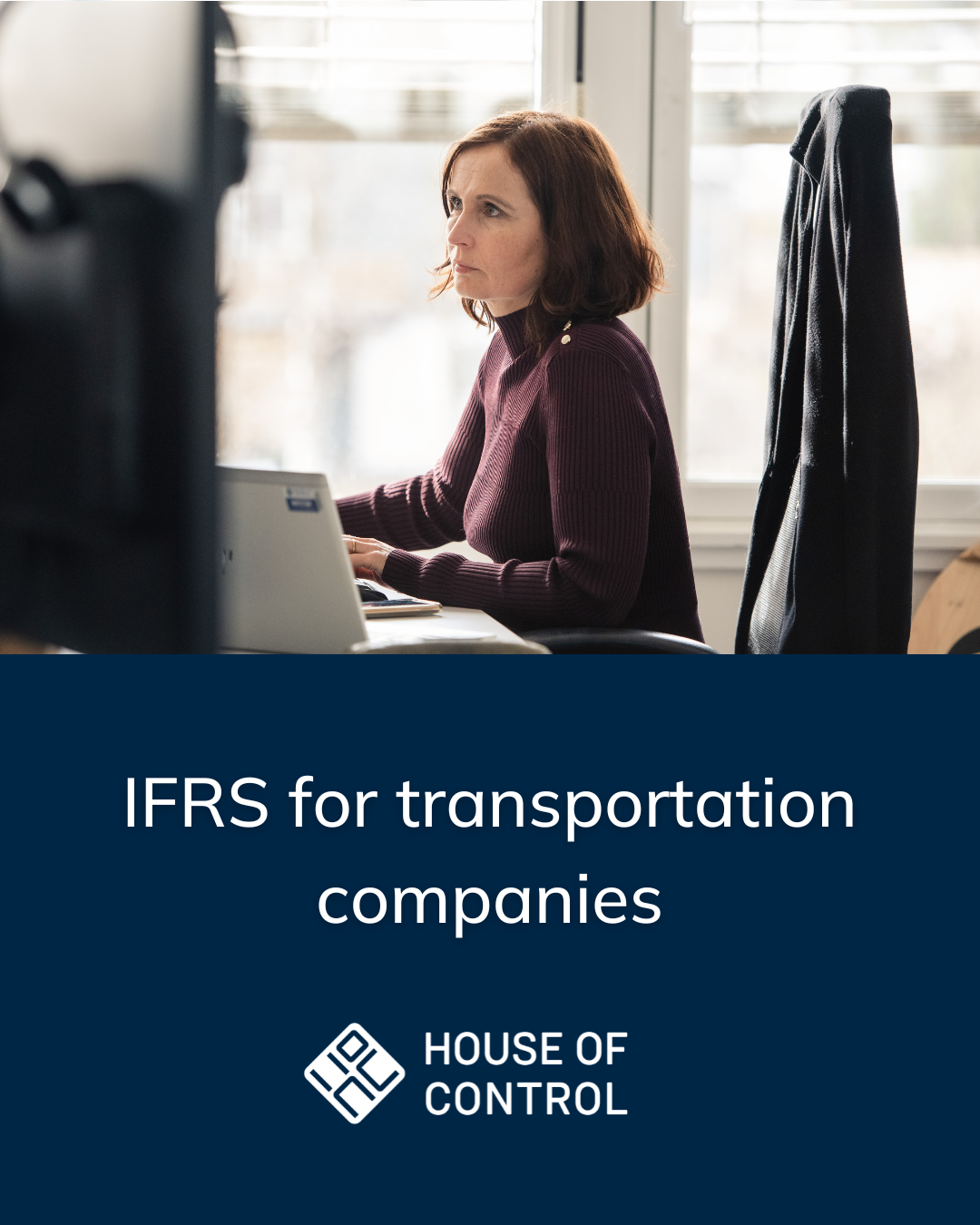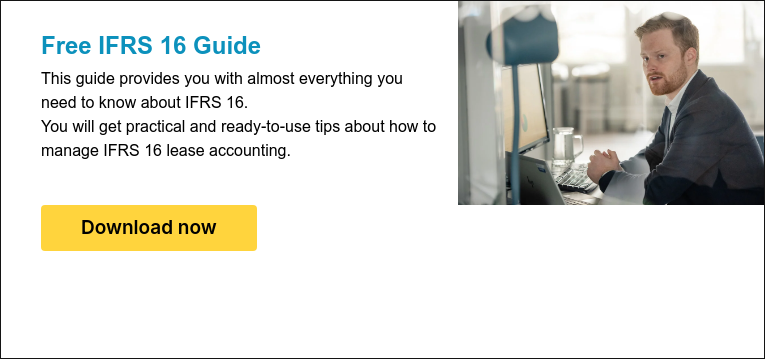IFRS 16 compliance for transportation companies can be tricky. Finance teams in the transportation industry know they have several unique challenges reporting IFRS 16 leases. Here’s what to consider – and how to solve for it.
Is your company involved in the business of moving goods, people, and materials using various modes of transport like road, rail, air, and sea? Do you consider your company to be in the transportation, logistics, shipping, or cargo industry?
As CFOs, controllers and accountants working in these industries, you know that this business and the professional challenges often differ from those of peers in other industries. In this article we will stick with the term transportation industry.
Before, lease management teams in transportation companies could work separately from the finance team. With lease accounting under IFRS 16, they both play an important role in providing accurate information for the financial statements.
Since 2019, IFRS reporting companies have had to follow the IFRS 16 lease accounting standard. The finance team needs to consider how all events during a lease's lifetime affect its value, which must be accounted for on the balance sheet.

The transportation industry and IFRS 16
Lease liabilities and IFRS 16 for transportation companies come with several challenges. It is a capital-intensive industry with substantial leases (or investments) in vehicles, equipment, and infrastructure. These large assets impact the balance sheet, and finance teams must carefully manage and report the related liabilities and capital expenditures.
As transportation companies frequently lease assets, their finance teams need to understand and comply with the lease accounting standards, especially IFRS 16, which require companies to record operating leases on the balance sheet. Finance teams must accurately recognize lease liabilities and corresponding right-of-use assets, which can be complex due to various lease structures and lease terms.
We have been talking to hundreds of finance teams in the transportation industry through the years. Often, they have been using Excel spreadsheets to handle IFRS 16 reporting. Our rule of thumb is that when the number of leases surpasses 15, the CFO should use a dedicated lease accounting software to comply with IFRS 16. Excel is simply not fit for purpose.
Transportation industry finance challenges
Transportation company finance teams already had several more than less unique challenges. Generally speaking, and no matter if we are talking road, rail, sea or air deliveries, the transportation industry is highly competitive. Also, fuel costs are a significant expense and can be highly volatile. Maintaining and repairing assets is another significant expense. Effective utilization of transport assets is critical.
The above-mentioned challenges are always present, while the industry is rapidly evolving and changing. Thus, finance teams must find ways for their employer to remain competitive by reducing costs, improving service, and investing in technology. Proactive teams also invest time to stay abreast of new technologies – and determine when and how to adopt them to improve operations.
Complex lease structures: The impact of IFRS 16 on the transportation industry
Compliance is often more challenging for transportation companies, as they often have complex lease structures involving various types of assets, such as aircraft, ships, trucks, and trains. Each type of asset may have different lease terms, payment structures, and accounting treatment, making it challenging for finance teams to accurately account for and manage these leases.
Many transportation companies operate globally, and they may have leases in multiple countries with different lease accounting standards and regulations. Finance teams must navigate these complexities and ensure compliance with various accounting standards such as IFRS and local GAAP.
Like in most industries, lease modifications and renewals are common due to changing business needs and market conditions. Finance teams must properly account for these changes and understand their implications on financial statements.
Lease management for transportation companies
For certain assets in the transportation industry, such as aircraft and ships, the valuation of the leased asset can be complex. Finance teams must accurately determine the fair value of these assets at the inception of the lease and during the lease term for accounting purposes.
Leases may also include maintenance and service agreements that need to be properly separated and accounted for.
For transportation companies with many lease agreements, this can be overwhelming. Using one spreadsheet for each lease to track all payments, renewals, changes, and discounts can be a big headache and lead to errors.
To overcome these challenges, finance teams in the transportation industry may need to invest in specialized lease accounting software, not least to ensure cross-functional collaboration between finance and operations teams.
Lease or not to lease
Of course, there is an alternative to leasing assets for transportation companies. They may also buy their trucks, ships, or airplanes. When finance teams are deciding whether to lease or buy critical assets, they consider factors such as:
Capital availability: They evaluate the company's current financial position and capital availability. Leasing may require lower upfront costs compared to purchasing, allowing the company to conserve capital for other essential investments.
Cost of capital: The cost of financing a purchase must be compared with the cost of leasing. If the company has access to low-cost capital, purchasing may be more cost-effective in the long run. On the other hand, if financing costs are high, leasing might be a more attractive option.
Asset obsolescence: The rate of technological advancements and potential asset obsolescence is a tricky one to analyze for finance teams. Leasing allows for regular upgrades and replacement of assets, reducing the risk of holding outdated equipment.
Flexibility and scalability: Finance teams assess the company's growth plans and how the asset fits into future business needs. Leasing offers flexibility, allowing the company to adapt to changing requirements and easily upgrade or replace assets as needed.
Residual value: The CFO’s team also considers the residual value of the asset at the end of the lease or useful life. Whereas owning for example a truck allows the company to benefit from its resale value, leasing transfers the potential profit or loss to the lessor.
Lease terms and conditions: When evaluating the terms and conditions of the lease agreement, the finance team considers lease duration, termination options, and potential penalties for early termination. It is important to understand the flexibility and constraints associated with the lease contract.
Transition to IFRS 16 for transportation companies
IFRS 16 compliance in a transportation company involves a complex process. It can be time-consuming and professionally challenging. Here are six steps that need to be taken:
- Identify leases: Companies will need to review all of their existing contracts to determine which ones qualify as leases under IFRS 16. This includes not only traditional leases of “means of transport”, but also leases of assets such as property, plant, and equipment, as well as service and licensing agreements.
- Assess the lease term: The lease term is the period over which the company has the right to use the underlying asset. The lease term should include any options to extend or terminate the lease that are reasonably certain to be exercised.
- Determine the lease payments: The lease payments are the payments to be made by the company over the term of the lease – for each lease. This includes any variable lease payments that depend on an index or a rate.
- Determine the discount rate: The discount rate is the rate used to calculate the present value of lease payments. It's typically the company's incremental borrowing rate, which is the rate that the company would have to pay to borrow the funds necessary to purchase the underlying asset.
- Recognize right-of-use assets and lease liabilities: Once the lease payments, term, and discount rate have been determined, companies will need to recognize a right-of-use asset and a lease liability on their balance sheet for each lease. The right-of-use assets should be amortized on a straight-line basis over the lease term, and the lease liability should be recorded at the present value of the lease payments.
- Disclose relevant information: Companies will also need to provide additional disclosures in the notes to the financial statements about the nature of their leases, the amount and timing of lease payments, and the carrying amounts of their lease liabilities and right-of-use assets.
Financial reporting under IFRS 16 for transportation companies
Here are a few specific ways in which IFRS 16 affects financial statements in a transportation company (and in most other industries, too):
Balance sheet: Lease liabilities and right-of-use assets will be added to the balance sheet, giving a more complete picture of a company's liabilities and assets. This also means that the equity section of the balance sheet will also be affected, as the lease liabilities are a form of long-term liabilities and will decrease equity.
Profit and loss statement: Lease payments, which were previously classified as operating expenses, will now be split into an interest expense and amortization of right-of-use asset in the income statement, which may affect the company's profitability measures.
Cash Flow statement: The lease payments will now be split between the financing activities and operating activities section of the cash flow statement, reflecting the financing nature of leases.
IFRS 16 lease disclosures for transportation companies: Companies will be required to provide additional disclosures in the notes to the financial statements about the nature of their leases, the amount and timing of lease payments, the lease term and the carrying amounts of their lease liabilities and right-of-use assets.
Can lease accounting software help a transportation company?
Our rule of thumb is that when the number of leases for trucks, cars, planes, ships, and trains surpass 15, the CFO should use a dedicated lease accounting software to comply with IFRS 16. Most transportation companies have far more than 15 leases. So, should you be looking for a solution inside or outside of the ERP system?
The Enterprise Resource Planning (ERP) is the backbone of digital tools used by the finance department. When ERP is used at its best, financial data in a transportation company is linked together. Also linked, are data from systems for production, e-commerce, payroll, HRM and CRM.
In a transportation company, there are a significant number of software that retrieves data from ERP and that creates data for ERP. Such software may or may not offer seamless ERP integrations. Invoice dispatch systems and incoming invoice processing systems, which meet national requirements, are familiar to most people. Period-end closing, reporting and budgeting are other examples of processes that are supported by solutions other than ERP.
We have dived into why also lease accounting software should coexist with the ERP, described in this article. In another article, we offer a comprehensive checklist for CFOs looking for lease accounting software to help the company comply with IFRS 16.

